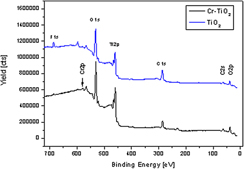Crossref Citations
This article has been cited by the following publications. This list is generated based on data provided by
Crossref.
Atyaoui, A.
Cachet, H.
Sutter, E. M. M.
and
Bousselmi, L.
2013.
Effect of the anodization voltage on the dimensions and photoactivity of titania nanotubes arrays.
Surface and Interface Analysis,
Vol. 45,
Issue. 11-12,
p.
1751.
Kim, Myungjun
Bae, Changdeuck
Kim, Hyunchul
Yoo, Hyunjun
Montero Moreno, Josep M.
Jung, Hyun Suk
Bachmann, Julien
Nielsch, Kornelius
and
Shin, Hyunjung
2013.
Confined crystallization of anatase TiO2 nanotubes and their implications on transport properties.
Journal of Materials Chemistry A,
Vol. 1,
Issue. 45,
p.
14080.
Memarbashi, S.
Saebnoori, E.
and
Shahrabi, T.
2014.
A Study on the Passivation Behavior and Semiconducting Properties of Gamma Titanium Aluminide in 0.1 N H2SO4, HNO3, and HClO4 Acidic Solutions.
Journal of Materials Engineering and Performance,
Vol. 23,
Issue. 3,
p.
912.
Albetran, H.
Haroosh, H.
Dong, Y.
Prida, V. M.
O’Connor, B. H.
and
Low, I. M.
2014.
Phase transformations and crystallization kinetics in electrospun TiO2 nanofibers in air and argon atmospheres.
Applied Physics A,
Vol. 116,
Issue. 1,
p.
161.
Hosseinpour, Pegah M
Yung, Daniel
Panaitescu, Eugen
Heiman, Don
Menon, Latika
Budil, David
and
Lewis, Laura H
2014.
Correlation of lattice defects and thermal processing in the crystallization of titania nanotube arrays.
Materials Research Express,
Vol. 1,
Issue. 4,
p.
045018.
Chen, Chong
Wang, Lei
Li, Fumin
and
Ling, Lanyu
2014.
Improving conversion efficiency of CdS quantum dots-sensitized TiO2 nanotube arrays by doping with Zn2+ and decorating with ZnO nanoparticles.
Materials Chemistry and Physics,
Vol. 146,
Issue. 3,
p.
531.
Albetran, H.
Haroosh, H.
Dong, Y.
O'Connor, B.H.
and
Low, I.M.
2014.
Ceramics for Environmental and Energy Applications II.
p.
125.
Hamedani, Hoda Amani
Allam, Nageh K.
El‐Sayed, Mostafa A.
Khaleel, Mohammad A.
Garmestani, Hamid
and
Alamgir, Faisal M.
2014.
An Experimental Insight into the Structural and Electronic Characteristics of Strontium‐Doped Titanium Dioxide Nanotube Arrays.
Advanced Functional Materials,
Vol. 24,
Issue. 43,
p.
6783.
Ghayeb, Yousef
and
Momeni, Mohamad Mohsen
2015.
Efficient sunlight-driven photocatalytic activity of chromium TiO2 nanotube nanocomposites prepared by anodizing and chemical bath deposition.
Journal of Materials Science: Materials in Electronics,
Vol. 26,
Issue. 7,
p.
5335.
Albetran, H.
O’Connor, B. H.
Prida, V. M.
and
Low, I. M.
2015.
Effect of vanadium ion implantation on the crystallization kinetics and phase transformation of electrospun TiO2 nanofibers.
Applied Physics A,
Vol. 120,
Issue. 2,
p.
623.
Henegar, Alex J.
and
Gougousi, Theodosia
2015.
Stability and Surface Reactivity of Anatase TiO2Films.
ECS Journal of Solid State Science and Technology,
Vol. 4,
Issue. 8,
p.
P298.
Momeni, Mohamad Mohsen
and
Ghayeb, Yousef
2015.
Photoelectrochemical water splitting on chromium-doped titanium dioxide nanotube photoanodes prepared by single-step anodizing.
Journal of Alloys and Compounds,
Vol. 637,
Issue. ,
p.
393.
Albetran, H.
O’Connor, B. H.
and
Low, I. M.
2016.
Activation energies for phase transformations in electrospun titania nanofibers: comparing the influence of argon and air atmospheres.
Applied Physics A,
Vol. 122,
Issue. 4,
Zheng, Lingxia
Han, Sancan
Liu, Hui
Yu, Pingping
and
Fang, Xiaosheng
2016.
Hierarchical MoS2 Nanosheet@TiO2 Nanotube Array Composites with Enhanced Photocatalytic and Photocurrent Performances.
Small,
Vol. 12,
Issue. 11,
p.
1527.
Albetran, Hani
and
Low, It Meng
2016.
Effect of indium ion implantation on crystallization kinetics and phase transformation of anodized titania nanotubes using in-situ high-temperature radiation diffraction.
Journal of Materials Research,
Vol. 31,
Issue. 11,
p.
1588.
Pan, Hui
2016.
Principles on design and fabrication of nanomaterials as photocatalysts for water-splitting.
Renewable and Sustainable Energy Reviews,
Vol. 57,
Issue. ,
p.
584.
Albetran, H.
and
Low, I. M.
2016.
Crystallization kinetics and phase transformations in aluminum ion-implanted electrospun TiO2 nanofibers.
Applied Physics A,
Vol. 122,
Issue. 12,
Albetran, H. M.
O'Connor, B. H.
and
Low, I. M.
2017.
Effect of pressure on TiO2 crystallization kinetics using in‐situ high‐temperature synchrotron radiation diffraction.
Journal of the American Ceramic Society,
Vol. 100,
Issue. 7,
p.
3199.
Albetran, Hani
Vega, Victor
Prida, Victor
and
Low, It-Meng
2018.
Dynamic Diffraction Studies on the Crystallization, Phase Transformation, and Activation Energies in Anodized Titania Nanotubes.
Nanomaterials,
Vol. 8,
Issue. 2,
p.
122.
Li, D. G.
and
Chen, D. R.
2018.
Influence of Prior Passivation on Characteristics of TiO2Nanotube Arrays Fabricated on Ti Foil in a HF+H2SO4Solution.
ECS Journal of Solid State Science and Technology,
Vol. 7,
Issue. 4,
p.
P143.
